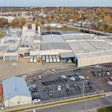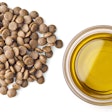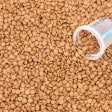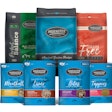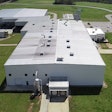Inflation is becoming a fact of life in just about every region of the world. In the US, the consumer price index (CPI) increased 1% from May to June and 5% since June 2007. (As of press time for this issue, June data was the most recent available.)
The US Bureau of Labor Statistics, which tracks both consumer and producer prices, said the CPI increase was due mainly to sharp spikes in the energy and food indexes (no surprises there). Though the report did not separate out petfood, it specifically cited increases in the indexes for pets, pet products and services.
Spanning the globe
This tale of inflation woe spans the globe. Consider these figures:
-
In the 15-nation Euro zone, inflation jumped to another record high in July: a 4.1% increase over the same month last year and the highest inflation figure for the zone since tracking began in 1997 ( International Herald Tribune , or IHT );
-
Double-digit inflation is rampant in Eastern Europe, including 11.4% in Estonia, 17.5% in Latvia and 30.2% in Ukraine (April figures cited by www.moneymorning.com );
-
In Latin America, inflation forecasts for 2008 include 9.2% in Argentina, 13.8% in Nicaragua, 15.1% in Bolivia and 25.7% in Venezuela ( Christian Science Monitor ); and
-
Even the world's economic darling, China, experienced record inflation in March, with the 8.7% increase from March 2007 representing an 11-year high ( IHT ).
Again, the common culprits are energy and food costs; excepting those two sectors, inflation is low in many regions.
Of course, none of this is news to you; you've all been feeling the pain of rapidly increasing transportation and commodity prices for months now. The overall US producer price index for June jumped 1.8% - a 9.2% increase on a 12-month basis, the largest since 1981. The June petfood producer index rose 6% from May and 6% from June 2007. And the grain commodity index rose 8.7% from May to June 2008.
No end in sight?
What may be a surprise is that, at least to date in developed regions, petfood consumers are not decreasing their spending. Euromonitor International reports that in the US, the only petfood categories showing a decrease in volume are mid-priced and economy dog foods and economy cat foods. Euromonitor is projecting a 4.3% increase in US dog and cat food value sales for this year.
Despite the high inflation in China and Eastern Europe, those economies are continuing to grow - the rate is not quite as healthy as in recent years but still respectable, especially when compared to growth rates for developed markets. For example, the US gross domestic product is expected to grow only 1% overall this year; Eastern Europe's is projected to grow 6%.
While Euromonitor acknowledges that rising commodity costs are cutting into petfood producers' profits, the report also points out that so far, pet owners seem to be accepting that you have to pass your increases on to them in the form of higher prices and/or smaller packages. Euromonitor attributes this acceptance and the continued market growth to premiumization and humanization. There appears to be no end in sight to these mitigating factors, at least not for higher-income pet owners in developed regions.
For pet owners suffering from the difficult economy, as well as those in developing markets, the picture may not be as positive. Only time will tell if petfood can continue to withstand the effects of inflation.






.jpg?auto=format%2Ccompress&fit=crop&h=167&q=70&w=250)
